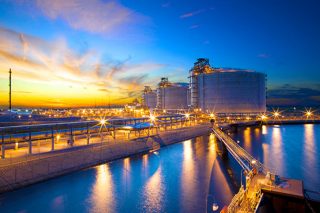San Diego-based Sempra Energy said that Cameron LNG has initiated the commissioning process for the support facilities and first liquefaction train of Phase 1 of its Hackberry, Louisiana, liquefaction-export project.
Phase 1 of the Cameron LNG liquefaction-export project, which includes the first three liquefaction trains, is a $10 billion facility with a projected export capability of 12 million tonnes per annum of LNG, or approximately 1.7 billion cubic feet per day.
All three trains are expected to be producing LNG in 2019, Sempra Energy said on Friday.
“All major construction activities have been completed to begin the commissioning and start-up process to produce LNG from the first liquefaction train,” said Joseph Householder, president and chief operating officer of Sempra Energy.
The commissioning process includes testing of all support systems, combustion turbines and compressors, as well as the delivery of feed gas from the transmission pipeline and production of the first LNG.
Once all of the steps of the commissioning process are approved by the Federal Energy Regulatory Commission (FERC) and successfully completed for the first liquefaction train, LNG production will start up, and then ramp up to full production for delivery to global markets.
Cameron LNG is jointly owned by affiliates of Sempra LNG & Midstream, Total, Mitsui & Co, and Japan LNG Investment, a company jointly owned by Mitsubishi Corporation and Nippon Yusen Kabushiki Kaisha (NYK).
Cameron LNG Phase 2, previously authorized by FERC, encompasses up to two additional liquefaction trains and up to two additional LNG storage tanks.


